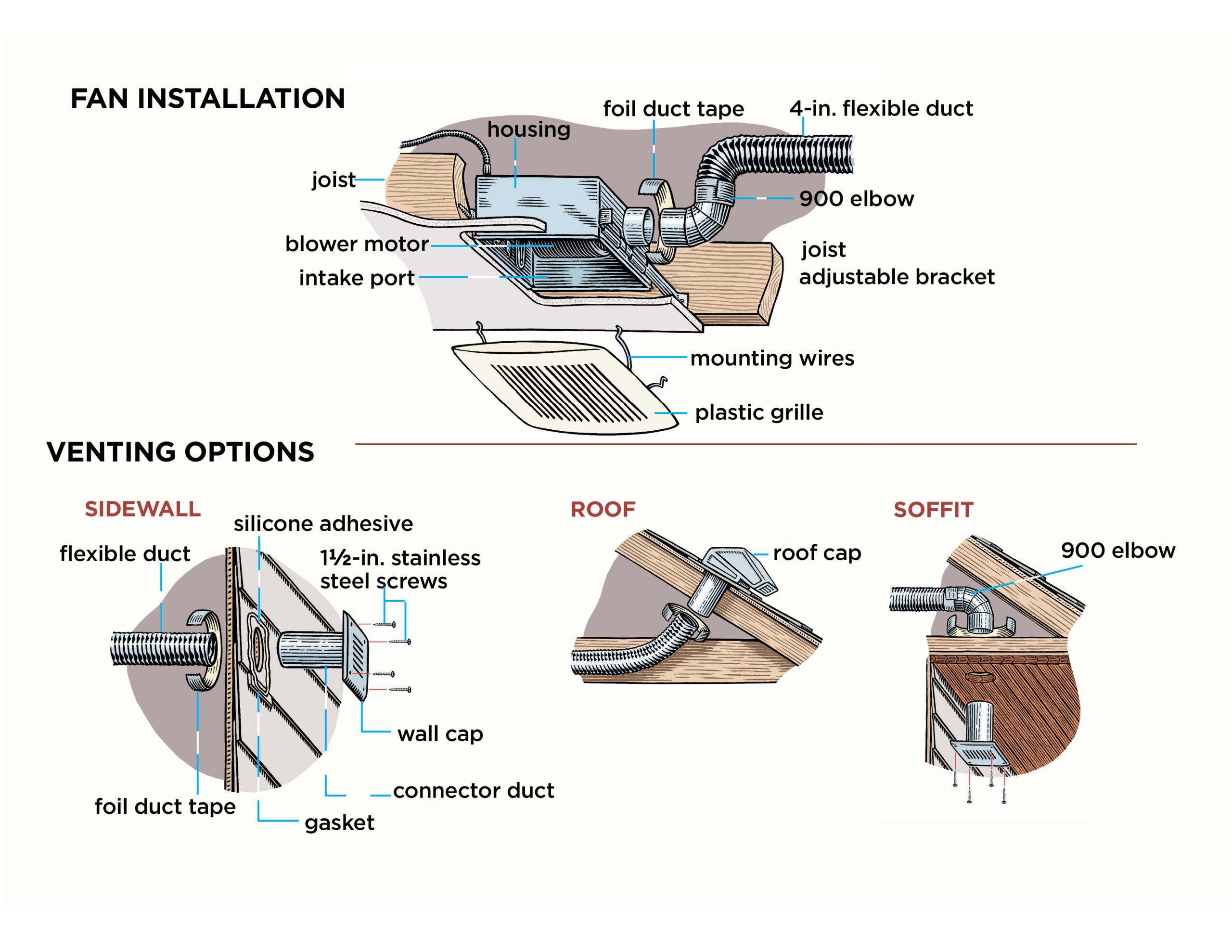Benefits of Bathroom Fan Flexible Duct

Bathroom fan flexible duct –
In the realm of bathroom renovations, the humble bathroom fan plays a crucial role in maintaining a healthy and comfortable indoor environment. One often-overlooked yet essential component of a bathroom fan installation is the flexible duct, which offers a plethora of advantages over traditional rigid ducts. In this article, we will delve into the benefits of using flexible duct in bathroom fan installations, exploring its ease of installation, cost-effectiveness, and space-saving capabilities, as well as its impact on airflow and ventilation.
Amidst the musty aroma of a bathroom, the flexible duct of the fan quietly whirred, like a phantom’s whisper. It was a reminder of hidden spaces and forgotten whispers, a passageway to unseen realms. As if conjured by the fan’s hum, a flickering halloween candle cast eerie shadows on the damp walls, its scent of pumpkin and spice mingling with the bathroom’s stale air.
Yet, amidst the ghostly ambiance, the fan’s steady rhythm served as a reassuring presence, a reminder of the mundane amidst the supernatural.
Ease of Installation
Unlike rigid ducts, which require precise measurements and meticulous cutting, flexible ducts are highly pliable and can be easily maneuvered around obstacles, making them ideal for retrofitting or installing in tight spaces. Their flexibility allows for a more efficient and less time-consuming installation process, reducing labor costs and minimizing disruption to your bathroom routine.
Cost-Effectiveness
Flexible ducts are generally more cost-effective than rigid ducts, as they require fewer fittings and connectors. Their lightweight nature also reduces shipping and handling costs. Additionally, the ease of installation can translate into lower labor expenses, making flexible ducts a budget-friendly option for bathroom fan installations.
While the bathroom fan flexible duct ensures proper ventilation, let’s shift our focus to the changing hues of autumn. With diy fall decor , you can effortlessly transform your home into a cozy haven. From vibrant pumpkin garlands to warm-toned leaf displays, embrace the spirit of the season.
Upon returning to the topic at hand, consider incorporating a bathroom fan flexible duct to enhance air circulation, ensuring a comfortable and well-ventilated space.
Space-Saving
In compact bathrooms where space is at a premium, flexible ducts shine. Their ability to bend and conform to tight corners and angles allows for a more efficient use of space, maximizing ventilation without sacrificing valuable floor or wall area. This makes flexible ducts particularly suitable for small bathrooms, powder rooms, or ensuites.
Improved Airflow and Ventilation
The flexibility of flexible ducts enables them to be routed in a way that optimizes airflow and ventilation. By reducing bends and kinks, flexible ducts minimize airflow resistance, ensuring that stale air is effectively removed from the bathroom. This improved ventilation helps prevent moisture buildup, reduces odors, and creates a healthier and more comfortable indoor environment.
Types and Features of Bathroom Fan Flexible Duct

Bathroom fan flexible ducts come in various types, each with unique characteristics to suit specific bathroom needs and requirements. Understanding the different types and their features is crucial for selecting the most appropriate duct for your bathroom ventilation system.
Materials
- Aluminum: Durable, lightweight, and corrosion-resistant. Ideal for long runs and tight spaces.
- PVC: Flexible and economical. Suitable for shorter runs and non-corrosive environments.
- Semi-Rigid: Combines the flexibility of PVC with the rigidity of aluminum. Offers better airflow and easier installation.
Sizes
Flexible duct sizes range from 3 inches to 10 inches in diameter. The appropriate size depends on the airflow capacity of the bathroom fan. Larger ducts accommodate higher airflow, while smaller ducts are suitable for lower airflow requirements.
Performance Characteristics, Bathroom fan flexible duct
- Airflow Resistance: Measures the resistance to airflow caused by the duct’s material and design. Lower airflow resistance indicates better airflow performance.
- Temperature Rating: Indicates the maximum temperature the duct can withstand. Choose a duct with a temperature rating higher than the maximum temperature produced by the bathroom fan.
- Flame Resistance: Some ducts are flame-resistant, providing an added layer of safety in case of a fire.
Installation and Maintenance of Bathroom Fan Flexible Duct

Installing and maintaining bathroom fan flexible duct is crucial for ensuring proper ventilation and extending its lifespan. The installation process involves connecting the duct to the fan and ceiling vent, ensuring proper sealing, and observing safety precautions. Regular maintenance, including cleaning and inspection, is essential to maintain optimal performance and longevity.
Installation
1. Connect the duct to the fan: Stretch the duct over the fan’s outlet and secure it with a clamp or duct tape. Ensure a snug fit to prevent air leaks.
2. Run the duct to the ceiling vent: Route the duct through the attic or ceiling cavity to the ceiling vent. Avoid sharp bends or kinks that could restrict airflow.
3. Connect the duct to the ceiling vent: Attach the duct to the ceiling vent using a vent adapter or duct tape. Ensure a secure connection to prevent air leaks.
4. Seal all connections: Use duct tape or mastic sealant to seal all connections between the duct, fan, and ceiling vent. This prevents air leaks and ensures efficient ventilation.
Maintenance
1. Clean the duct: Regularly clean the duct to remove dust, debris, and mold. Use a vacuum cleaner or brush to remove loose particles. For deeper cleaning, use a mild detergent solution and rinse thoroughly.
2. Inspect the duct: Periodically inspect the duct for any damage or leaks. Check for tears, holes, or loose connections. Repair or replace any damaged sections promptly.
3. Check the fan: Ensure the fan is operating properly by checking its speed and noise level. If the fan is not functioning correctly, inspect the motor, bearings, and electrical connections.